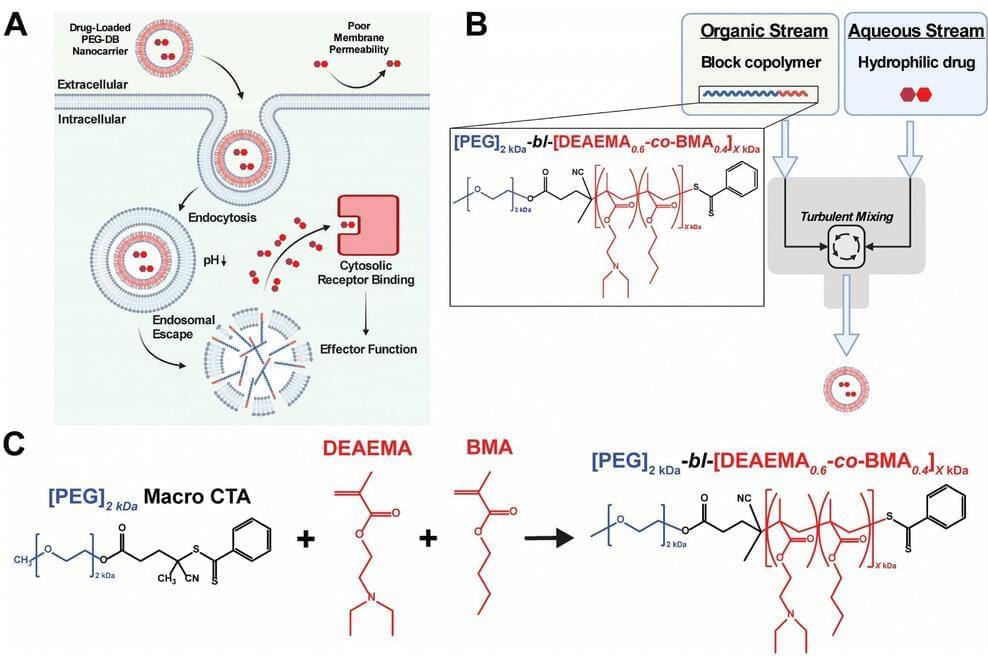Mar 1, 2024
Stanford’s Tiny Accelerator Promises Giant Leaps for Medical and Physics Breakthroughs
Posted by Dan Breeden in categories: biotech/medical, engineering
A new advance by Stanford engineers could lead to particle accelerators being widely available in science, medicine, and industry.
Stanford researchers are getting closer to building a tiny electron accelerator based on “accelerator-on-a-chip” technology with broad potential applications in studying physics as well as medical and industrial uses.
The researchers have demonstrated that a silicon dielectric laser accelerator, or DLA, can now both speed up and confine electrons, creating a focused beam of high-energy electrons. “If the electrons were microscopic cars, it’s as if, for the first time, we’re steering and we have our foot on the gas,” said Payton Broaddus, PhD ’23 in electrical engineering and the lead author on a paper published on February 23 detailing the breakthrough in Physical Review Letters.

















